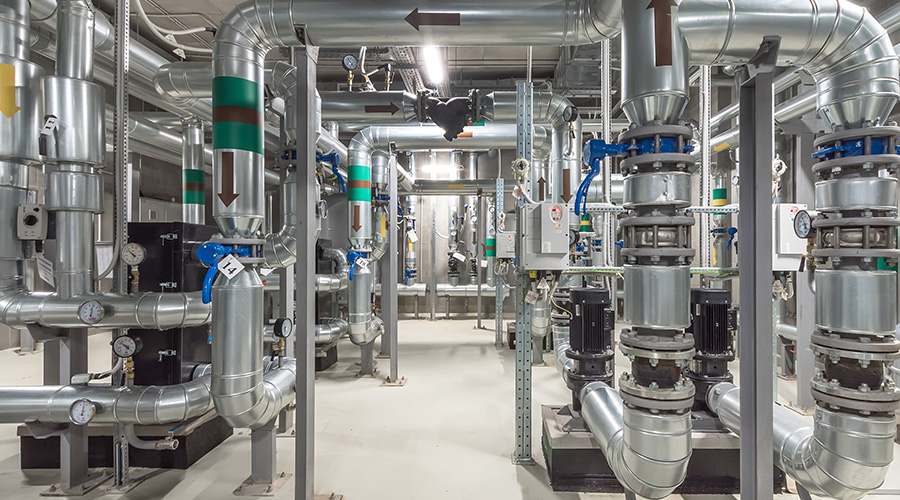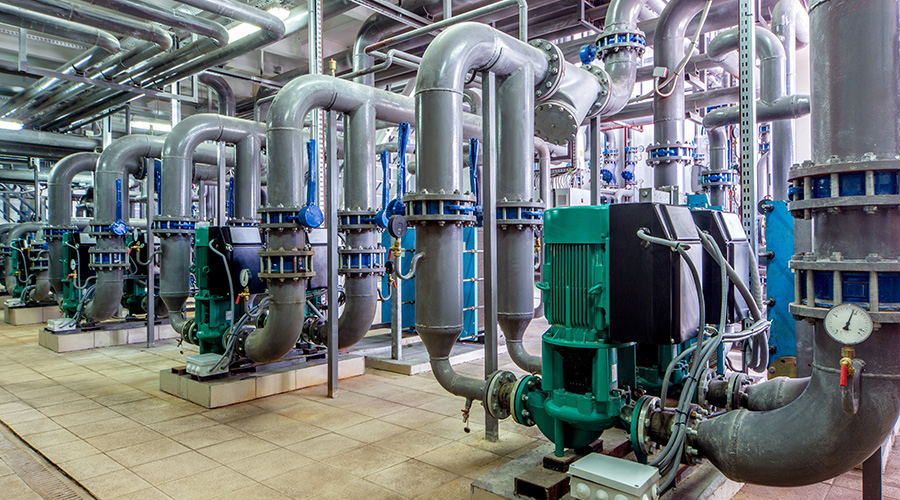Maximum HVAC
HVAC system commissioning, spurred by technology advances, becomes easier and more beneficial to facilities
The commissioning of building HVAC systems has been gaining in acceptance among maintenance and engineering managers who realize that the benefits of commissioning far outweigh the associated costs. Those who have successfully completed a commissioning project have found that although it inevitably is a time-consuming and costly process, the results included a reduction in the number of change orders and claims required, fewer project delays, and faster completion of construction and renovation projects.
But the benefits did not stop with the final acceptance of a project. Compared to those that did not complete the commissioning process, fully commissioned HVAC system projects show significant reductions in energy and operating costs, improvements in the building environment, and enhancements in system reliability and maintainability. Few processes have a higher rate of return on the initial investment than commissioning.
New Tools
In spite of these advantages, many maintenance and engineering managers remain reluctant to commission their HVAC systems. For most in this group, it is simply the case that commissioning requires too much time and money to perform.
This situation is particularly true when dealing with larger projects because the commissioning costs and time requirements tend to increase exponentially with the complexity of the project. With shortages in both staffing and funding, managers either have no choice or feel that it is more cost-effective to commit precious resources elsewhere.
Fortunately, managers have a number of new tools that can help reduce time and cost requirements by automating some portions of the process. Two of these include the widespread use of smart-control devices and significant advances in the capabilities of building automation systems (BAS).
The degree to which the process can be automated depends largely on the complexity and capabilities of the system being installed. But all systems can benefit to some extent.
If managers use a BAS to simplify and automate the commissioning process, it is essential that the communications network be installed early in the construction process. That way, the system’s data-collection capabilities can be put to use during commissioning.
Verifying Installation
Although the commissioning process starts early in the design phase, most of its costs and labor requirements occur later as the project nears completion. One phase in which significant reductions can be achieved is in verifying the installation.
Installation verification focuses on the component level, and seeks to determine whether the devices are installed and operating properly. It requires that all controllers, actuators and sensors be tested and operation confirmed, including power, wiring, settings, and travel and direction.
Traditionally, technicians have performed the tests manually using checklists. Each technician working with the system verification receives checklists, and they mark the checklists as they test and confirm each item. Perhaps the most significant drawback to the paper checklist is finding a method of storing the results so managers can retrieve them easily later.
Personal digital assistants (PDA) offer an alternative to paper checklists. Technicians can generate checklists of items to verify and download them to the PDA. After the technicians have performed their verification tests and entered the data into the PDA, they can transfer the results back to the computer for archiving, eliminating the need to maintain paper files or reenter data into the computer.
Calibrating Devices
Once technicians have confirmed that all system devices are properly installed, they must calibrate those devices so that sensor readings report actual conditions and actuator positioning produces the desired result. Calibration typically requires that technicians modify settings on the individual devices or configure software so that the reading from the sensor or device matches operations under some known reference condition.
Calibrations typically require the coordinated efforts of two people: a field-based technician and an operator at the central system. When calibrating a device, the central operator notes the reading and calls the field technician. The field technician then compares the value to some reference value, and reports the difference.
If the device is field calibrated, the technician then adjusts the setting on the device and rechecks it with the central operator. If the device is software calibrated, the central operator makes the adjustment and rechecks the value with the field technician. Often several iterations must be completed before the device is properly calibrated.
This back-and-forth process often can be simplified by using field devices or simply by using the system itself. Technicians using the proper microprocessor-based hand tools that plug into the HVAC system device can check device readings in the field directly, eliminating the need for a central operator. Similarly, the central operator can calibrate many software-calibrated devices by setting the system operation to known conditions.
System Testing
One of the most time consuming and critical steps in the commissioning process is the performance testing of the completed system. The previous steps in the commissioning process help ensure that individual components are calibrated and operating properly, but the performance test verifies that all components, subsystems and systems work together properly. Typically, this process involved a team of individuals taking measurements and changing software parameters as required.
Today, system manufacturers offer handheld devices that technicians can plug directly into the device or system being tested. Using these devices, a technician can monitor a device’s operation, override its control system, identify the necessary changes to its calibration and positioning, and upload the necessary changes to the device.
Technicians also can tap into the data-collection and analysis capabilities of a BAS to monitor and evaluate performance, particularly those tests best performed over a period of time. They can program and automate system tests, monitor and evaluate system responses to changing conditions, and verify proper sequencing.
Spearheading the Effort
The commissioning process involves most members of the construction process: the owner, the prime contractor, several subcontractors, and the in-house engineer. It would seem natural that the owner would head the effort because the owner has the most to gain by completing the process properly. But if the owner is to take on this responsibility, it is critical that several conditions be met.
The owner must be willing to dedicate the resources necessary to see commissioning through to completion. Even if some of the steps are automated, commissioning still requires a significant amount of time and commitment on the part of the owner’s staff.
The staff that the owner dedicates to the commissioning must be properly trained in the commissioning process. Expertise will be required in several areas. Learning on the job is not only inefficient but ineffective.
If these conditions can be met, then heading the commissioning effort in-house can be effective. This approach also helps to ensure consistency in commissioning across projects for those facilities having multiple HVAC construction and renovations projects.
But if the owner lacks the properly trained and experienced in-house personnel who can be dedicated for the entire commissioning process, a better option might be to bring in a third-party professional already experienced in HVAC system commissioning. Using an outside professional will bring in the level of expertise that is needed to successfully complete the commissioning.
If an outside professional is used, it is essential that all parties involved in the project understand that the commissioning authority works for the owner and has the authority to schedule and coordinate all commissioning activities, including:
- reviewing the plans and specifications
- conducting walk-through inspections
- reviewing all operations and maintenance manuals
- witnessing the testing of all system operations.
Managers cannot enter into the commissioning process lightly, but advances in both handheld test equipment and system software have made the process both faster and simpler. Some steps in the commissioning process still will have to be performed manually, but many can be automated. This can reduce both the time required to perform necessary steps and the cost of performing those steps. The net result is that HVAC system commissioning is more cost effective than ever before.
Keeping Small Problems Small
Even with close monitoring throughout the construction process, the completed system still will have some problems. While some of these problems — such as equipment that might not have been installed or components that were improperly wired — might be noticed readily, some problems can go unnoticed for years.
Problems that maintenance personnel and building occupants come to accept as limitations of the system in fact might be improperly installed or setup system devices or software. Without commissioning, most will remain unnoticed and uncorrected. Among the common problems often found by the commissioning process are these:
- incorrect calibration of sensors
- malfunctioning control hardware
- missing equipment and components
- permanently overridden controls
- incorrect sequences of operation
- heating and cooling systems that fight each other.
|
Related Topics:











